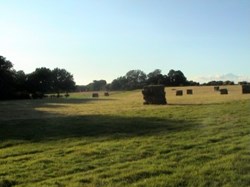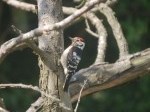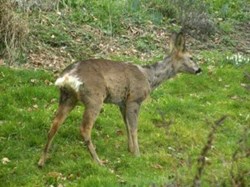Biodiversity and the countryside in the Hart Valley
Anyone who has visited the villages and countryside around Crookham Village and Dogmersfield on the edge of Fleet cannot fail to be impressed by its picturesque qualities and uniquely English ‘idyllic’ rural character. A relatively small and very accessible area between the A287 in the south and the south west mainline railway to the north it is an exceptionally diverse landscape rich in natural beauty and supporting many species of rare and declining wildlife. It feels like a timeless place, cosy and small scale, it has been damaged by modern farming practices but its character and habitats are still largely intact and this makes it very special. It is a precious location, enjoyed by many that is worthy of great respect and protection.
The two villages are linked by narrow, winding lanes with eye-catching old pubs, oast houses, canal cottages, and many other listed buildings, including a Water Mill. Both villages are Conservation Areas, because of their exceptional groupings of historic buildings. The River Hart rises from the chalk near Crondall and flows north, meandering through an enclosed landscape at first before its valley becomes much broader and more open beyond Dogmersfield. The gently undulating hillocks of Crookham Village and a wide open ridge are punctuated by enclosed vales, rich in ancient and wet woodland, streams, ponds and marshy meadows, many of these areas are SINC’s, (Sites of nature Conservation Interest).
The farming is mixed, with arable fields on free draining slopes and low hills, such as at Grove Farm. Pasture elsewhere is grazed by cattle, sheep and horses. These fields are all stitched together with a network of ancient hedgerows. Small patches of heathland bog occur close to vegetation more typical of the nearby chalky downs. This reflects the location of the Hart Valley sandwiched between the extensive natural areas of the Hampshire Downs in the south and the Thames Basin Heathland Special Protection Area to the north and east. Watercourses flow into the valley from both places shaping its vegetation and gently imposing an exceptional biodiversity.
Superimposed on this ancient landscape is the meandering Basingstoke Canal SSSI, which is nationally significant for dragonflies and aquatic plants and forms a precious and very well used local amenity. The quality of this very narrow corridor, however, depends largely on its remarkably rich setting. The canal towpath connects to a network of public and permissive footpaths, allowing easy exploration of this delightful area to the residents of Fleet and its villages, as well as to our many visitors.
Even in a wildlife-rich county like Hampshire, the biodiversity of the Hart Valley is notable, with no large scale intensive farming of the complex and small scale landscape. It is possible to see rare and declining farmland birds such as barn owl, skylark (12 – 15 pairs, one of the largest concentrations in Hart) yellowhammer, linnet, lapwing and occasionally stonechat. There are also breeding lesser spotted woodpecker (nationally rare breeding species), marsh tit, spotted flycatcher, woodcock, red kite and buzzard. These species are indicators of an exceptionally high quality natural landscape, increasingly rare in lowland UK. The Hart floodplain supports wintering snipe, with jack snipe, and up to 3 pairs of breeding reed bunting and stonechat. Kingfishers breed on the River Hart. Rare redshank, have even attempted to breed recently and little ringed plover and little egret bred in 2010 & 2011.
The North-South alignment of the valley attracts numerous bird migrants including large numbers of swallows and martins, with flocks of yellow wagtail and wheatear in the autumn and passage waders such as green sandpiper and curlew. Very rare hoopoe, wryneck, waxwing, ring ouzel, Dartford warbler, grasshopper warbler and quail have all occurred in recent years. In this vital wildlife corridor 150 species of birds have been recorded
The woodlands are alive with spectacular butterflies during the summer, including silver washed fritillaries, purple hairstreak and white admiral. The meadows support breeding small copper, common blue and occasionally marbled white butterflies.
All the woodlands are ancient and feature a spectacular ground flora including extensive bluebell carpets, with over 200 early purple orchids and areas of wild daffodil, primrose and goldilocks.
Elsewhere, sweet woodruff and moschatel grow with sanicle (lime loving species) and floodplain meadows support displays of pepper saxifrage, marsh ragwort, ragged robin, yellow flag and marsh marigold.
Overall, the assemblage of plant species and habitats is truly outstanding.
Roe deer are common but protected species are also numerous, such as badger and many species of bat. Great-crested newts have been recorded in Crookham Village, with weasels and stoats reported in recent months. Threatened species such as hornet, stag beetles, grass snake and adder have all been seen, with good numbers of bullfinch, house sparrow and song thrush.
The Hart Valley is very different from the other landscapes on the edge of Fleet and elsewhere in the Hart District. The historic, natural boundary between the forested and developed heathlands of Fleet and the cultivated lands of Crookham Village with improved soil is clearly visible at Grove Farm. Ancient Drovers tracks can be seen crossing the valley, connecting the winter heathland grazing to the lush river meadows. Although not designated for wildlife habitat like busy Fleet Pond and the SPA Heathlands, the Hart valley is richer and more diverse in habitat and far more picturesque. Its uniqueness is in its combination of incredible natural diversity, exceptional concentrations of threatened species and its great beauty. This accessible and inspiring landscape provides unrivalled opportunities for Hart residents to get close to nature often in almost pristine conditions.
Richard Hellier, Crookham Village,
April 2012





